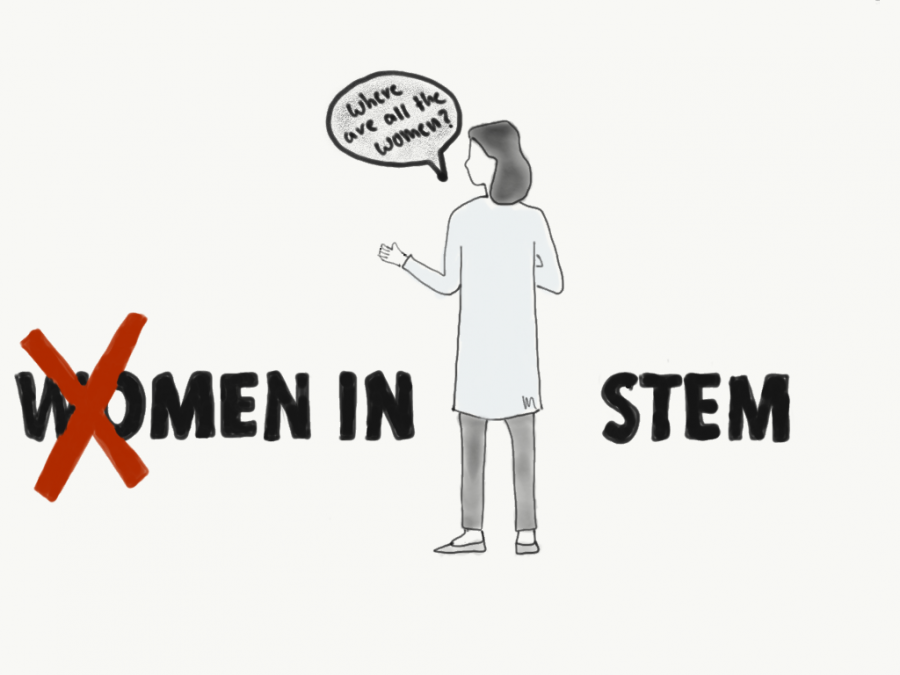Op-ed: The male-dominated STEM era must end
Illustration by Madison Boudreau Popovic
Women only make up about 28 percent of the STEM workforce.
October 5, 2020
One of my chemistry lectures the other day reminded me of something I had briefly forgotten about: Women in STEM have a history of not being recognized or heard.
This discussion brought me back to the days of AP Biology, where I learned about how James Watson and Francis Crick claimed all the glory for discovering the structure of DNA, while the person who did all the work remained hidden and not talked about for years. This woman who was silenced and in the shadows of her male peers was Rosalind Franklin. It is time for the next generations of men in STEM to be more inclusive and recognize the extraordinary work and contributions of women. This male-dominated era must be reformed in STEM departments worldwide.
Women make up approximately 28 percent of the STEM workforce, and the amount of women of color in STEM is even lower. Alongside this, men significantly outnumber women when it comes to pursuing a major in STEM in universities. But why?
There are strong stereotypes that date back for numerous years pertaining to STEM majors and jobs. One of many stereotypes conveys that women do not possess as much natural talent as men do at STEM. However, research refutes these unproven claims, demonstrating that women are just as talented as men involved in this area of study. Additionally, the pay gap between men and women is not promising. For every dollar a man makes in a STEM career, a woman makes 86 cents. On top of these deterring factors, it is not exactly enticing when there is a history of women’s work in STEM going unnoticed.
What if a man involved in STEM did a research project, and instead of receiving proper credit and recognition for their work they were ignored? Not cared about? That is what women involved in STEM endured for years. This combined with stereotypes and the pay gap does not paint a promising picture of a possible career or major choice for women.
Things must change. How can people inspire change in a community and major riddled with sexism? It must start at a young age. Western Governors University suggests that education professionals and those in the STEM community can promote this area of study to girls at a young age in order to combat stereotypes and sexism. Everyone must engage in a collective effort to persuade young girls to pursue a future embedded in STEM, beginning years prior to high school. By the time girls and boys enter high school, many decide what their majors will be and the number of boys that choose to take part in STEM outnumber that of girls. By beginning the encouragement process early, this can inspire young girls to build a better future for the STEM community, with less sexism and more recognition for women’s work in STEM.
The gender gaps between men and women, unfavorable stereotypes and the hidden nature of women in STEM needs to end. Women make amazing contributions to science, and it is a shame for it to be masked by such pesky, disgraceful traditions rooted in the STEM world.
Madison Boudreau Popovic is a first-year biology and English combined major. She can be reached at popovic.m@northeastern.edu.







